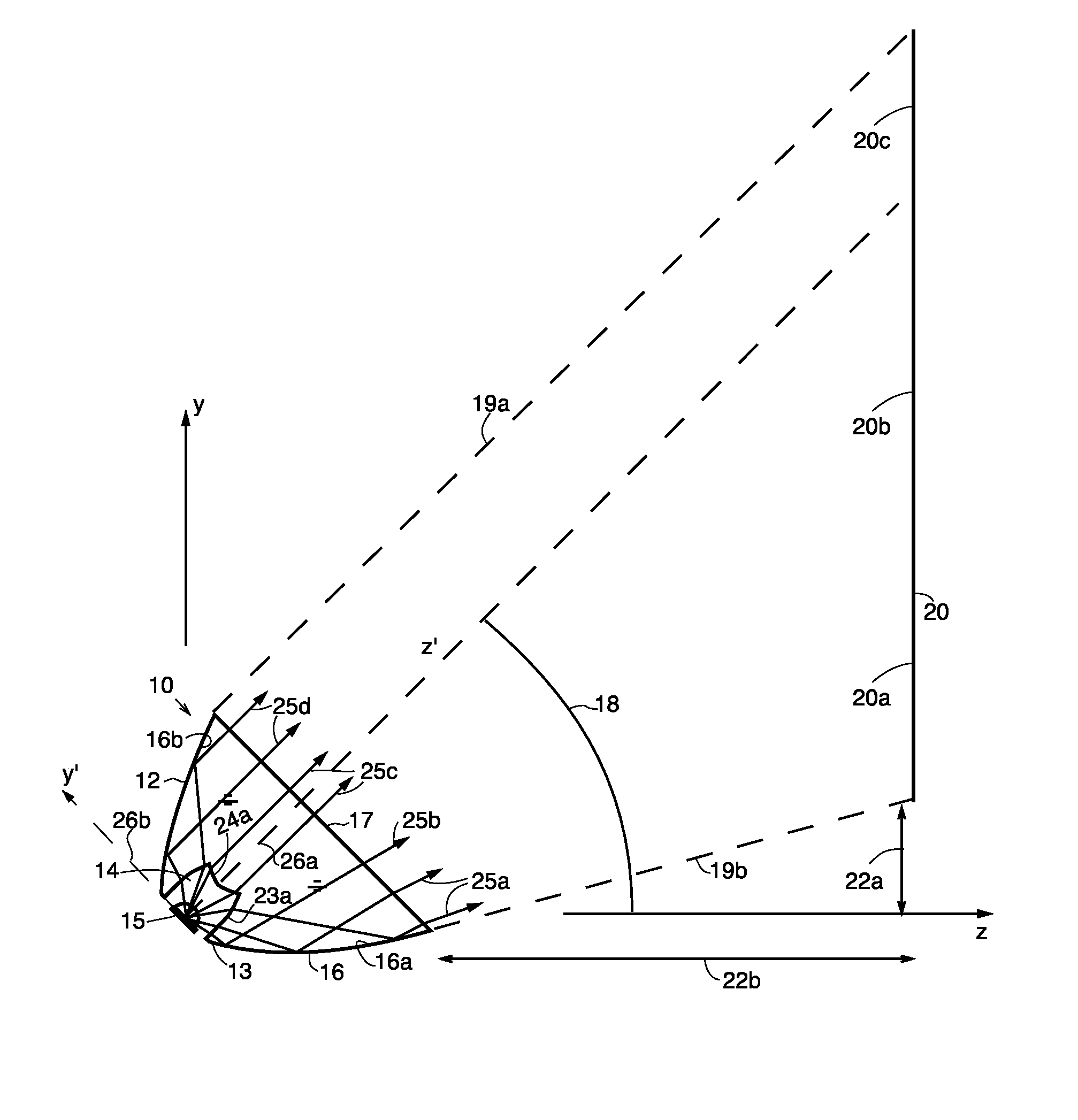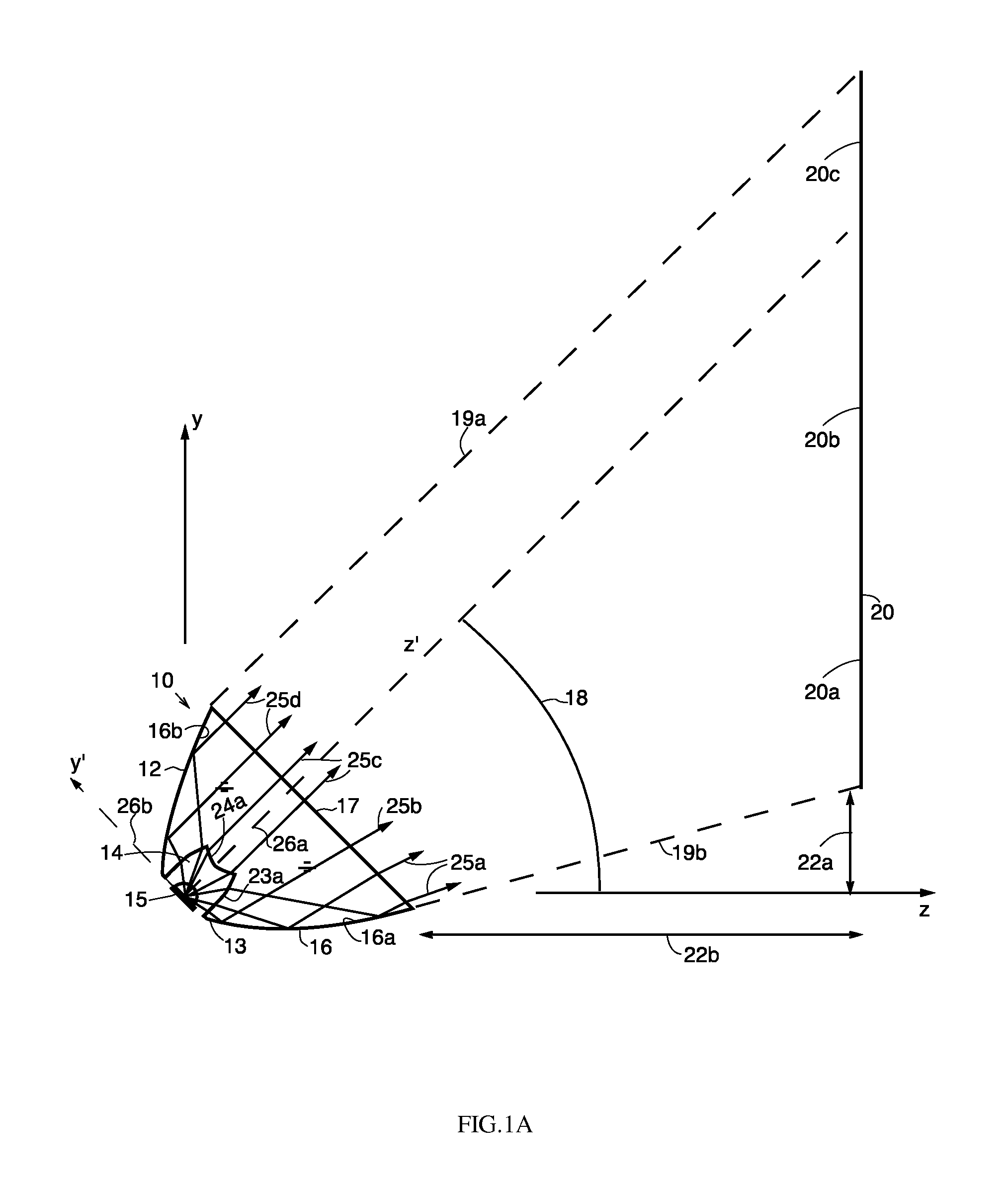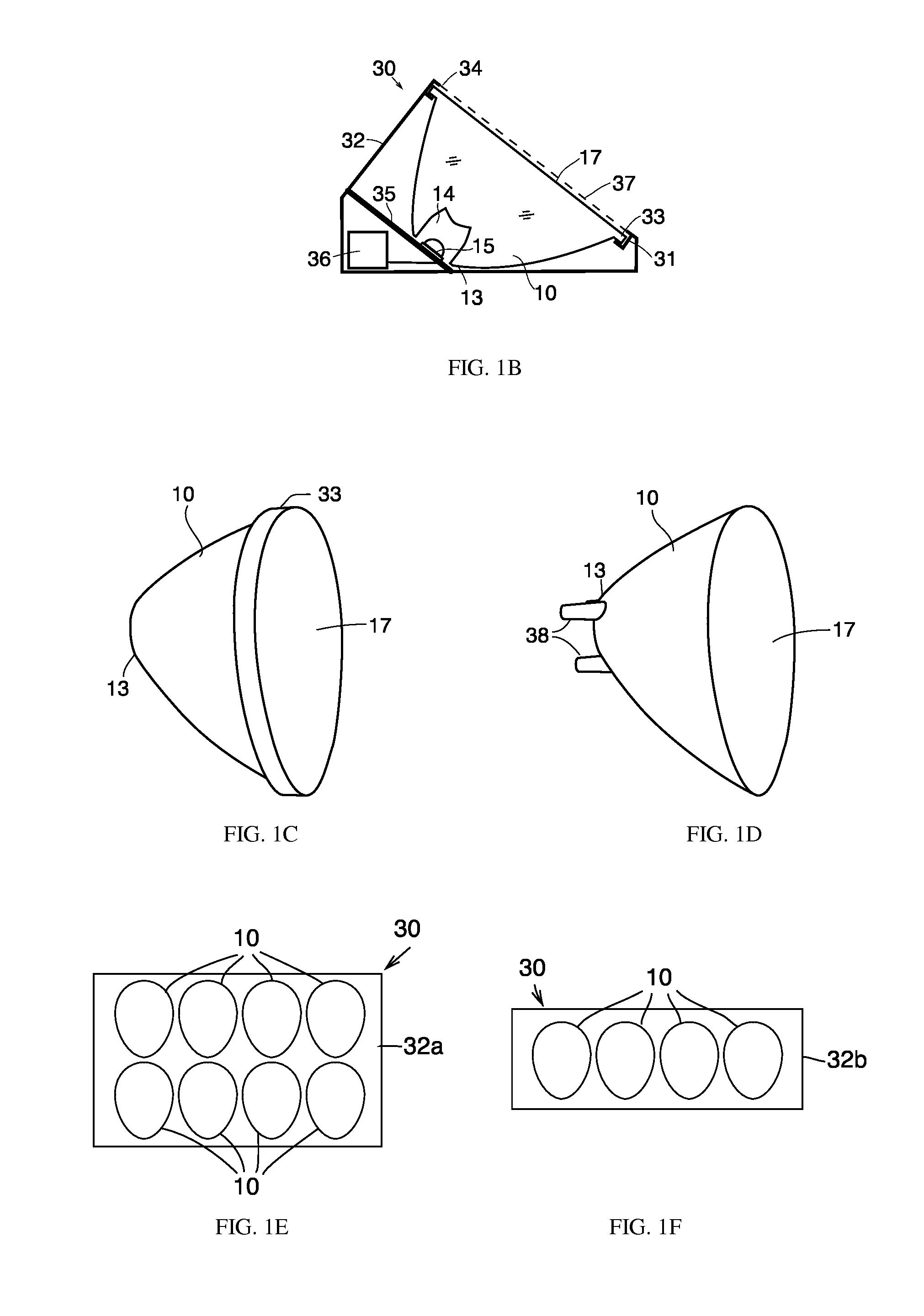Optical element providing oblique illumination and apparatuses using same
a technology of optical elements and oblique illumination, applied in the field of optical elements, can solve the problems of poor illumination of the billboard, poor irradiance or power per unit area, uneven irradiance along the height of the billboard, etc., and achieve the effect of improving the oblique illumination of the surfa
- Summary
- Abstract
- Description
- Claims
- Application Information
AI Technical Summary
Benefits of technology
Problems solved by technology
Method used
Image
Examples
Embodiment Construction
[0045]Referring to FIG. 1, the optical element 10 of the present invention is shown having a body 12 with a base 13 having a cavity or recess 14 for receiving a light source 15, e.g., LED, outer sides 16 providing total internal reflection, and a front face 17. Body 12 is positioned above light source 15, such that the light source lies within the cavity 14 and is even or nearly even with the bottom of base 13. Front surface 17 is tilted to position the optical element 10 at an oblique angle 18 with respect to a target surface 20, such as a billboard, screen, wall, or other surface desired to be illuminated. The target output illumination from the optical element 10 extends between lines 19a and 19b upwards, i.e., to the top and bottom edges of surface 20. Lines 19a and 19b are defined as the viewing angle θ, as shown in FIG. 2. The body 12 is asymmetrically (or oblong) shaped about an optical axis z′ (as opposed to being rotationally symmetric), and longer along the major axis y′, ...
PUM
 Login to View More
Login to View More Abstract
Description
Claims
Application Information
 Login to View More
Login to View More - R&D
- Intellectual Property
- Life Sciences
- Materials
- Tech Scout
- Unparalleled Data Quality
- Higher Quality Content
- 60% Fewer Hallucinations
Browse by: Latest US Patents, China's latest patents, Technical Efficacy Thesaurus, Application Domain, Technology Topic, Popular Technical Reports.
© 2025 PatSnap. All rights reserved.Legal|Privacy policy|Modern Slavery Act Transparency Statement|Sitemap|About US| Contact US: help@patsnap.com



